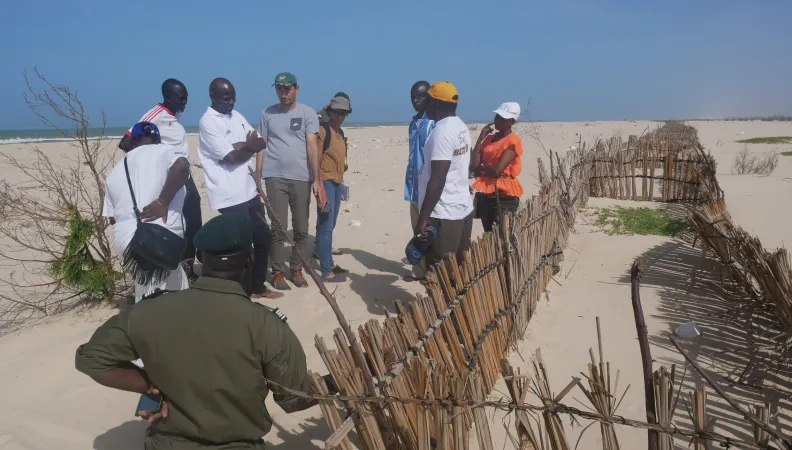Share the page
“It’s essential to be able to demonstrate the effectiveness of the solutions tested”: interview with WACA project partners
Published on

The WACA project tests soft nature-based solutions on pilot sites in four countries. At the first Steering Committee meeting held in Dakar on 12 March 2019, we interviewed three of the programme partners: Peter Kristensen from the World Bank, Moussa Sall from the Dakar Ecological Monitoring Centre (CSE) and Janique Etienne, head of aquatic ecosystem projects at FFEM.
Moussa Sall is coordinator of the Regional Unit of the West African Coastal Observation Mission (WACOM) at the Dakar Ecological Monitoring Centre.
Peter Kristensen, team leader for the West African coastlines management programme (WACA), World Bank
Janique Etienne, head of aquatic ecosystem projects, sustainable cities and nature-based solutions at FFEM
Why was the West African coastlines management programme (WACA) initiated?
Peter Kristensen: Global warming, coastal erosion, floods and pollution are the main risks to sustainable development in West Africa. In 2017, environmental degradation of the coasts in Benin, Côte d’Ivoire, Senegal and Togo cost 3.8 billion dollars, that’s 5.3% of the GDP of these four countries. The WACA programme sought to mobilise expertise and innovation to allow these countries to respond to these challenges at local, regional and national level.
Is the initiation of a dialogue between the partners a prerequisite to ensuring the effectiveness and sustainability of the solutions identified?
P. K: Coastal protection is expensive and requires a number of ministries and industries to work together. In addition, it often needs complex and technical solutions. Thanks to its partnership approach, the WACA project brings together African and international players from various technical domains. As a result it can draw on the necessary technical expertise and appropriate financing mechanisms.
How do capitalisation and communication help with scaling-up?
Janique Etienne: The WACA programme is very ambitious, since it potentially involves 17 countries. Supported by FFEM, the project allows “soft” solutions for coastal erosion to be tested on pilot sites. It’s essential to be able to demonstrate their effectiveness and highlight good practices so that these can be mobilised at larger scale, starting with the whole WACA programme.
How can coastal observation mechanisms guide public policy on the management of coastline areas?
Moussa Sall: Effective observation mechanisms deliver high-quality data and information on the coastline. Taking into account the relative homogeneity of geomorphological conditions and the challenges faced by coastlines, the knowledge acquired during these pilot activities can be capitalised at the scale of the intervention area. Improving knowledge and sharing the experiences specific to the project lead to better decision-making, with appropriate planning tools being put in place together with the integration and coordination of regional or national initiatives.
Why involve political decision-makers in upscaling solutions?
J. E: Finding solutions to reduce coastal risk can’t just happen at local level. “Traditional” infrastructure, such as dams or dykes, can actually amplify erosion effects downstream of the area protected. This is why involving decision-makers in regional planning and the selection of technical alternatives, and their engagement through public policies, is so essential to innovation upscaling!
